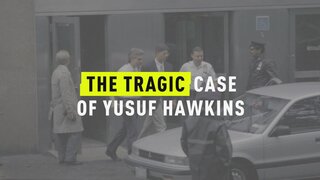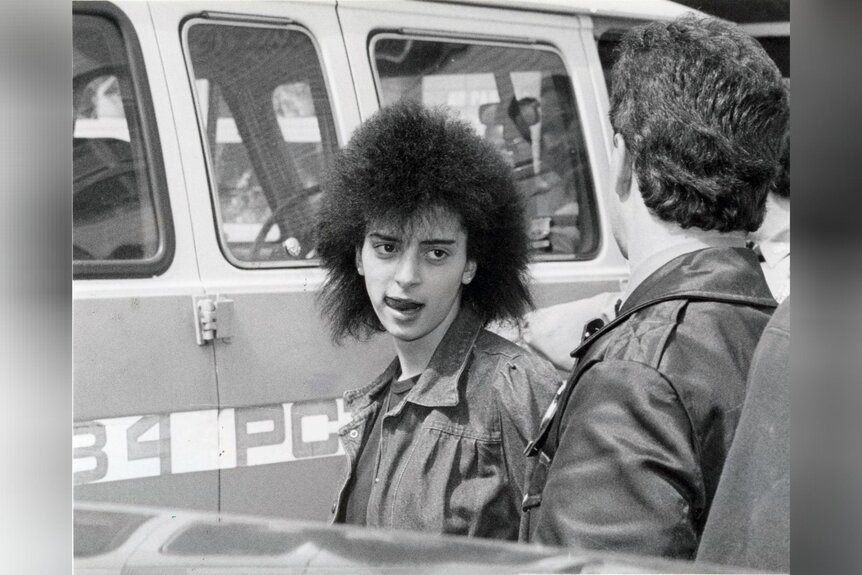Create a free profile to get unlimited access to exclusive videos, breaking news, sweepstakes, and more!
What Happened To Gina Feliciano, Who Spurned One Of Yusuf Hawkins' Accused Killers?
During the trial for Yusuf Hawkins' murder, the defense attempted to argue Gina Feliciano, an ex-girlfriend of one of the accused killers, was actually to blame for his death.

One of the most infamous killings in New York City's history may have been triggered by a jealous ex-boyfriend who stirred up a riot in his Brooklyn neighborhood, according to a new HBO documentary.
Gina Feliciano, who lived in the Bensonhurst area of Brooklyn, briefly dated Keith Mondello, but a conflict between the two may have incited Mondello to around up a gang of mostly white youths and stage a fatal attack on 16-year-old Yusuf Hawkins, as shown in "Yusuf Hawkins: Storm Over Brooklyn."
Hawkins did not know anyone in the neighborhood and was only there the night of August 23, 1989 to look at a used car with his friends. But after being set upon by the group led by Mondello, prosecutors say Hawkins was fatally shot by Joseph Fama, a participant in the riot.
Mondello defended his actions that night, claiming that Feliciano had threatened to bring a large group of Black and Hispanic friends to the neighborhood to beat him up, so he gathered up a large group in self-defense.
Feliciano contended to police that Mondello was upset that she had invited her Black and Hispanic friends to her birthday party, as the documentary shows.
"He called me a sp-c lover and he spit on the floor," Feliciano told "60 Minutes" in an interview that aired in October of 1989, a few months after Hawkins' death, according to the New York Times.
She claimed she warned her friends away from Bensonhurst the night Hawkins was shot to death.
During the 1989 interview with "60 Minutes," Feliciano (appearing with a wig and facial prosthetics) was shown living under guard and in hiding due to threats to her life. CBS correspondent Ed Bradley reported that Feliciano was not well-liked by the residents of Bensonhurst, allegedly because of her friendships with people who weren't white.
Feliciano also had drug issues, which became a central argument for the defense team of Mondello, Fama, and other youths charged in connection to Hawkins' killing.
While defending Mondello, lawyer Stephen Murphy called Feliciano a ''crackhead'' and a ''contemptible liar,'' according to a New York Times report from 1990.
''She is still the same drug addict she always was and she always will be," Murphy said in his opening statements, the New York Times reports.
Murphy's treatment of Feliciano during Mondello's trial was harshly criticized, with a judge repeatedly reprimanding Murphy and reminding him "Miss Feliciano is not on trial here." Likewise, the National Organization for Women said Murphy was attempting to scapegoat Feliciano for Mondello's incitement of a riot.
''How can they say it's my fault?'' Feliciano said to "60 Minutes." ''Did he die because of me? Was I there shooting? Was I there with a bat? No! How can they say that?''
Even a lawyer for one of the other Bensonhurst youths criticized Murphy's legal strategy.
"If the jury finds Gina Feliciano not important, it's difficult if your entire defense has been laid at her feet," lawyer Benjamin Brafman told the New York Times in 1990.
Lawyer Barry Scheck similarly critiqued Murphy's apparent scapegoating of Feliciano because it could lead a jury to ask why the rioters didn't just go home and not engage in violence.
"Even if she had provoked them, does that still justify them doing what they did out in the street?" Scheck said rhetorically to the Times in 1990.
Mondello was found guilty of riot, assault, menacing, harassment, and weapons possession, but ultimately acquitted of Hawkins' killing.
Justice Thaddeus Owens echoed Scheck's sentiments while sentencing Mondello to serve five to 16 years in prison, saying that if Mondello felt threatened, "all he had to do was go home and call the police," according to The New York Times.
Owens also called Mondello the "catalyst" for Hawkins' death, saying, "Without Mr. Mondello, there wouldn't have been the death of anyone."
Fama was ultimately convicted of murdering Hawkins, though he continues to maintain his innocence.
What Happened To Gina Feliciano?
During the trial, prosecutors admitted that Feliciano had issues with drug use and said she had been in treatment for substance abuse. She was charged with cocaine possession after Fama and Mondello were convicted in 1990, according to a prior report from the Associated Press.
Feliciano died some time ago, according to documentary director Muta'Ali Muhammad.
"We were told Gina passed away [and] got confirmation from her daughter," he told Newsday in a recent interview.


























